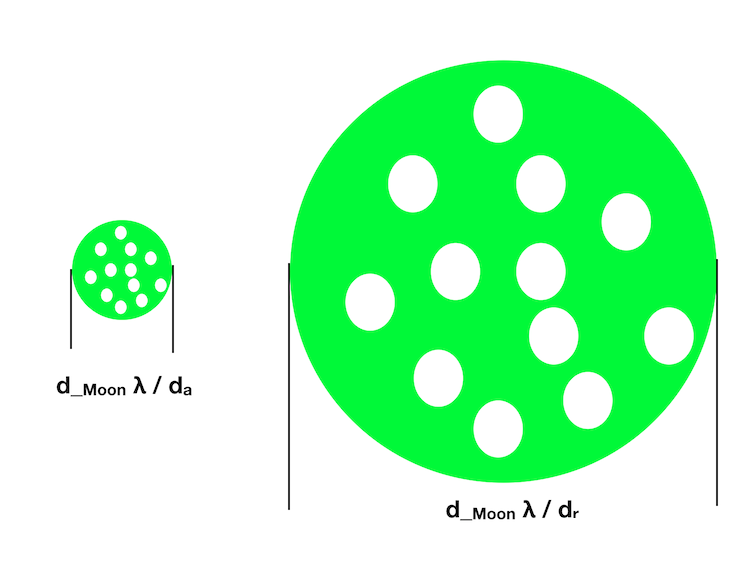I've been thinking about What is the minimal equipment required to observe the Apollo lunar retroreflectors? for a while and every time I start to estimate the strength of the received signal I choke because I don't know which terms are most important.
For the purposes of my question lets assume a 532 nm diode pumped solid state laser is pulsed at several tens of Hz with 10 nanosecond pulses and has a longitudinal coherence length of the order of 1 meter. A 2D square array of $n^2$ high quality fused silica corner-cube retroreflectors with diameter $d_r$ spaced with a pitch $d$ with static position noise in the axial direction $d_n$. The width of one side of the array is then and width $n d$.
There might for example be one hundred 2 cm diameter reflectors with a 5 cm pitch making a 50 x 50 cm array, with an axial position error of 10 microns.
The laser is collimated a 2 meter diameter telescope about $d_{Moon} = $400,000 kilometers away, so we can treat the incident wavefront as a plane wave.
I know that the intensity pattern of the reflected signal will look more like Swiss cheese than the Moon does because we have an array of reflected spots rather than one 50x50 cm aperture, and that they are not coherent on the scale of a wavelength.
But How can I estimate the spatial size of the reflected spot on the Earth, and the lateral scale of the intensity non-uniformities within it?
Is the size more like $d_{Moon} \lambda / d$ or $d_{Moon} \lambda / d_r$?
Is the scale of the non-uniformity more like $d_{Moon} \lambda / d_r$ or $d_{Moon} \lambda / d_n$?
From:
- How is a result of no time variation in the gravitational constant $G$ related to a measurement of no local expansion?
- Jitter in timing photons from corner-cube retroreflector arrays on the Moon; does each recorded pulse come from one single cube?
- To what quantum mechanical 'discoveries' have retroreflectors on the Moon contributed?




